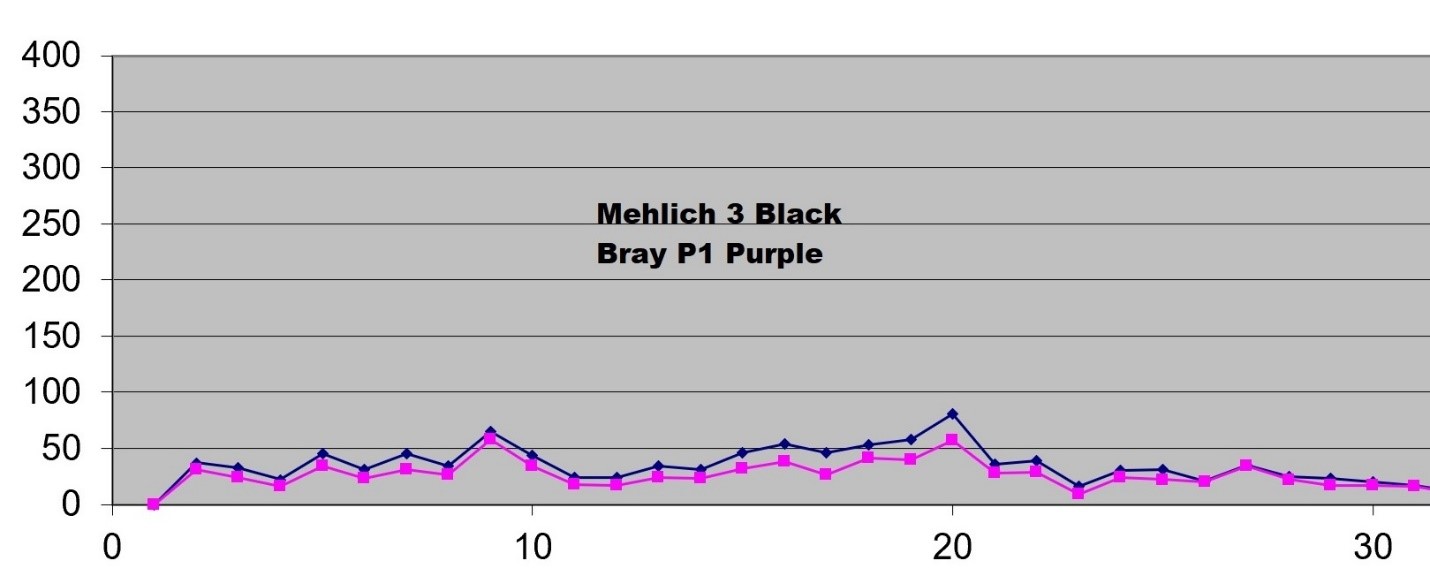Soil health tests are a big conversation topic these days, but there’s a lot of conflicting information out there. Presented by Stacy Zuber, Ph.D., State Soil Health Specialist with USDA Natural Resources Conservation Service, this webinar discusses how soil health tests differ from measuring soil fertility, sampling and handling procedures and how to interpret your results.
Presenter: Stacy Zuber, Ph.D., State Soil Health Specialist with the... Read More →
ILSOYADVISOR POST
Three Phosphorus Tests and Which to Use on Your Soil
September 25, 2019
Phosphorus was recently in the spotlight as the American Society of Agronomy celebrated Phosphorus Week, September 15-21. It seems appropriate to celebrate the discovery of one of our most important crop nutrients and focus on how to manage it better.
Discovered 350 years ago, phosphorus is the 11th most abundant element on earth. Because it is so plentiful, it would seem it should be one of the easiest to manage for crop production. However, it is not evenly distributed and not always readily available for plant growth. According to Emerson Nafzinger, University of Illinois Extension, soybeans remove 0.75 pounds of P2O5 per bushel of grain. Some of that phosphorus comes from the soil and some comes from added fertilizer.
The first step to better phosphorus management is testing. Over the years, many tests have been developed to help producers determine if they need to be adding phosphorus fertility to maximize crop production. One of the first universally accepted tests was the Bray P1 test. Ideal P1 levels have been established and the test has been in use since the 1930s, so we have lots of data on removal and ideal levels. P1 ideal level is 70 pounds per acre. Bray P2 uses a slightly more acidic extractant. It was developed to help with application of rock phosphate as a fertilizer. Today, in soils with pH below 7.0, P2 can be used to determine reserve levels of phosphorus in the soil. The Bray tests are colorimetric, which means the amount of light passing through a liquid is measured to determine P levels.
Mehlich 3 is also a commonly used test for phosphorus. The Mehlich 3 extraction is used to analyze many of our nutrients including potassium, calcium, magnesium, sodium and the micronutrients. The test is read by ICP which is a type of atomic absorption spectrometer. Mehlich 3 readings tend to average a bit lower for P, so ideal levels could be adjusted higher, although University of Illinois Extension does not do so. I have run both P1 and Mehlich 3 on many samples over the years and find that the comparison is not always linear. Use whichever you or your lab prefers and use the same test every time. Beware that some labs run Mehlich 3 but calculate a P1 test—this is not ideal.

Olsen P is another test I use on high pH soils. The calcium in high pH soils can tie up phosphorus and make it less available for plant growth. Olsen gives a better idea about P availability on high pH soils and you should consider running this test if you are in that situation. Ideal Olsen Test is 30 pounds per acre.
Iowa State University presents a good comparison of the P tests.
While low soil phosphorus can have a negative impact on crop production, high soil phosphorus is associated with high levels of dissolved phosphorus in our water. When I was matriculating at University of Illinois at Urbana-Champaign (UIUC), we were taught that phosphorus did not leave the field except by erosion, and movement was not really a problem because it did not affect crop production.
We have since learned that about half the phosphorus that leaves the field is by erosion and the other half is dissolved in runoff and drainage water. The other problem with phosphorus loss is that relatively low levels can cause harmful algae blooms as we’ve seen with Lake Erie in recent years. The phosphorus itself is not harmful for human consumption, but the toxins produced by the algae are harmful. The algae bloom caused by excessive nutrients can also remove oxygen from the ecosystem and cause eutrophication, or the death of animal life due to lack of oxygen. The eutrophication can negatively affect a lot of aquatic life. Some of our most desirable game fish are the most vulnerable. Excessive phosphorus can also interfere with zinc uptake.
Managing the phosphorus levels in our soils is important to crops and the environment. Phosphorus is already one of the most highly regulated nutrients in the United States. Places like the Chesapeake Bay and Lake Erie watersheds are the most prominent. The regulatory levels of phosphorus may be reasonable enough, but the problem with regulations is that they remove management flexibility for the producer. The target now for more regulation is focused on the Midwest because of hypoxia in the Gulf of Mexico. Perhaps we can hold back those regulations by responsible management.
Here is a list of steps to take to better manage phosphorus:
- Keep phosphorus test levels in the 70 pound per acre range.
- Don’t add fertilizer when soil test levels exceed the ideal amount.
- Placing fertilizer below the surface can be effective in managing losses.
- Keep soil pH in the 6.0 to 7.0 range.
- Do not apply manure on snow or frozen ground.
- In manure systems, keep soil test levels below 300 pounds per acre.
- Keep soil loss at or below tolerable levels.
- Keep sediment on the field using structural and vegetative methods.
- Soil test often to monitor levels.
- Use soil tests appropriate for your soils.
- Use 4R principles in making decisions about how much phosphorus to apply and when.
As we celebrate the discovery of phosphorus, we need to understand that levels that are too low can have a negative effect on crop production, but levels that are too high can have a negative effect on our planet. If you’d like to learn more, Pete Kleinman, U.S. Department of Agriculture, gives a good overview in his blog on why phosphorus is needed on farms. The site also has additional resources for added context and perspective.





Comments
Add new comment